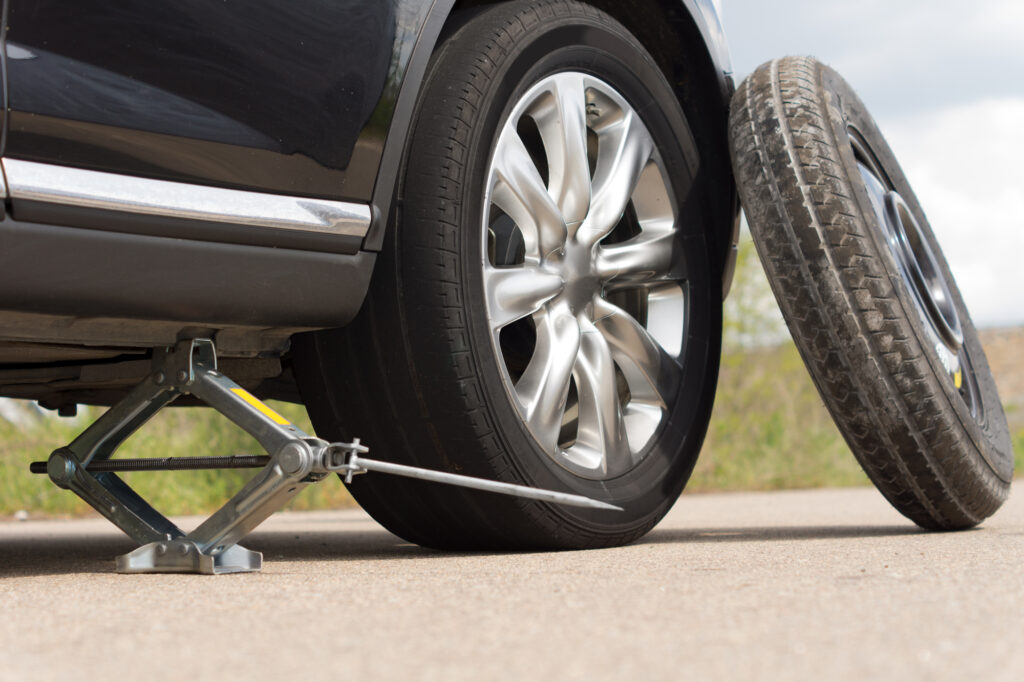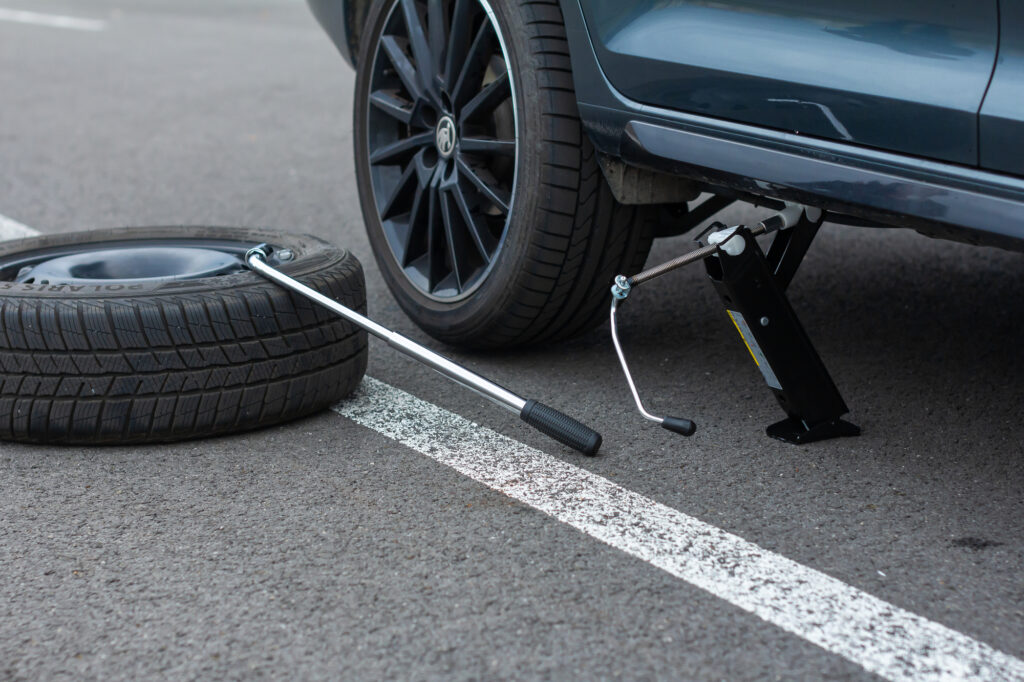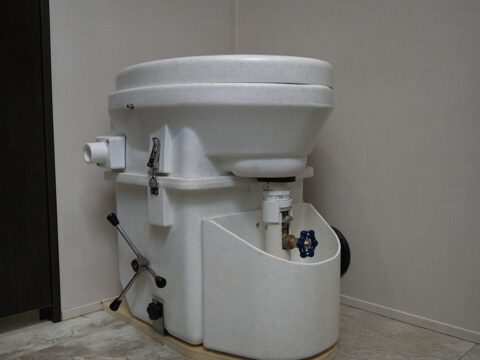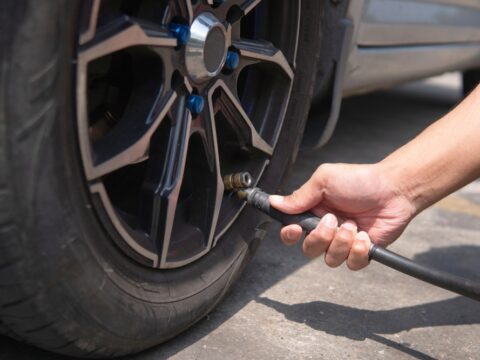The size of the jack you need for your Ford F150 will depend on the weight of your specific vehicle. The weight of an F150 can vary depending on factors such as engine type, cab style, and bed length.
Generally, you should use a floor jack with a lifting capacity of at least 3 tons for most F150 models. However, if you have a larger or heavier-duty F150 model, such as the F150 Raptor, you may need to use a jack with a higher lifting capacity.

Contents
Car Jack Sizes Overview
Car jacks come in different sizes and types, each designed to lift vehicles of varying weights and sizes. Here is an overview of some of the most common car jack sizes:
Scissor Jacks
Scissor jacks are mechanical jack types that use a lead screw and worm gear to lift heavy loads.
They are compact and lightweight, ideal for emergencies or smaller vehicles with lower weight capacities. They typically have a lifting capacity of around 2-3 tons.
How to Use:
- Position the Jack: First, place the scissor jack underneath the designated lifting point on your vehicle.
- Crank Handle: Insert the crank handle into the scissor jack’s socket and turn clockwise to raise the jack’s arms.
- Lifting Motion: As you turn the crank handle, it rotates a lead screw that moves through a worm gear inside the jack’s housing. The rotation of this screw causes the two arms of the scissor jack to move apart, which lifts your vehicle off the ground.
- Lowering Motion: To lower your vehicle, turn the crank handle counterclockwise to reverse the process and safely bring down your car.
Bottle Jacks
Hydraulic bottle jacks are larger and more powerful than scissor jacks, making them better suited for lifting heavier vehicles like trucks and SUVs.
While industrial versions can top out at 100 tons, those for home use can handle 2-20 tons.
How to Use:
- Position the jack: Position the bottle jack underneath the object you want to lift. Locate the jack’s saddle, which is the top part that makes contact with the vehicle.
- Pump the jack handle: The bottle jack will have a handle that you can use to pump the hydraulic fluid into the jack, which will lift the saddle.
- Check the load: As you lift the object, periodically check to ensure the load is stable and centered on the jack.
- Lower the jack: When you’re ready to lower the load, slowly release the pressure on the jack by turning the release valve counterclockwise.
Floor Jacks
Floor jacks are typically more stable than a bottle or scissor jacks because of their larger base and broader stance.
They’re a popular, high-capacity choice because they have a long handle that allows you to use the hydraulic pump from a standing position.
These jacks can be used on almost any vehicle and have lifting capacities upwards of 4 tons.
How to Use:
- Set up the jack: Place the floor jack under the jack point, ensuring that the jack pad is centered and securely positioned.
- Adjust the jack height: Use the handle to pump the hydraulic fluid into the jack, lifting the pad until it is in contact with the vehicle or object.
- Pump the jack handle: From a standing position, continue pumping the handle until the vehicle is off the ground.
- Place jack stands: Once you’ve lifted the vehicle to the desired height, supporting it with jack stands is essential. Place the jack stands under the vehicle’s frame or other sturdy locations to hold the weight.
- Lowering the vehicle: Remove the jack stands, then slowly turn the release valve counterclockwise
Hi-Lift Jacks
A high lift jack, or farm jack, is a versatile tool commonly used for lifting and pulling heavy vehicles like trucks and SUVs.
They can lift objects as high as five feet off the ground and have a maximum weight capacity of up to 7,000 pounds.
High lift jacks can also be used as a winch by attaching a chain or strap to the lifting mechanism and pulling the load towards the jack. This feature helps pull vehicles out of ditches and unlodges mud-buried tires.
How to Use:
- Position the jack: Position the high lift jack correctly on the object you want to lift. Make sure that the base of the jack is firmly placed on the ground and that the jack’s lifting mechanism is aligned with the object.
- Secure the load: Use chains or straps to secure the load to the jack, ensuring it is centered and stable.
- Pump the jack handle: Use the handle to pump the hydraulic fluid into the jack, lifting the object to the desired height. Make sure to pump the handle slowly and steadily, checking the stability of the load as you go.
- Adjust the load: Once the object is lifted, you may need to adjust the position of the vehicle or the jack to maintain stability.
- Lower the load: When you’re ready to lower the vehicle, slowly release the pressure on the jack by turning the release valve counterclockwise.

Factors to Consider When Choosing a Car Jack
Choosing the correct car jack can make all the difference when safely and effectively lifting your vehicle.
Let’s take a look at sSome of the factors to consider when selecting a car jack include:
Weight Capacity
The weight capacity of a car jack is one of the most important factors to consider. You should choose a jack with a weight capacity that exceeds the weight of your vehicle.
Portability
If you plan on using your car jack for emergency repairs or on-the-go maintenance, portability may be a factor to consider. Scissor jacks are generally more portable than floor jacks or bottle jacks.
Lifting Height
The lifting height of a car jack is another critical consideration, especially if you have a lifted truck or SUV.
Safety Features
Look for safety features like locking mechanisms and anti-slip pads to ensure safe operation while using the car jack.
Price
Car jacks can range in price from under $20 for basic scissor jacks to several hundred dollars for heavy-duty models.
What Size Bottle Jack for F150?
The size of the bottle jack you need for your F150 will depend on the weight of your truck. As a general rule of thumb, you should choose a bottle jack with a weight capacity of at least 1.5 times the weight of your vehicle.
For example, a 2021 Ford F150 has a curb weight that ranges from 4,021 to 5,540 pounds. Therefore, you would need a bottle jack with a weight capacity of at least 6,000 to 8,500 pounds.
In addition to weight capacity, you should also consider the lifting range of the bottle jack. You’ll need a lifting range of at least 12 inches for an F150.
What Size Floor Jack for F150
A 3-ton floor jack with a weight capacity of 6,000 pounds is suitable for most F150 models.
However, it’s always important to check your vehicle’s owner’s manual or manufacturer’s guide for the recommended jack size for your specific make and model.
You should also consider any after-market accessories or modifications that increase the overall weight of your F150.
Best Jack Stands for Ford F150
You should choose a jack stand that is strong, durable, and has a weight capacity that exceeds the weight of your vehicle to ensure safety.
We’ve rounded up a few options that meet those requirements:
- Torin Big Red Steel Jack Stands have a 6-ton weight capacity and feature sturdy steel construction with a broad base for added stability.
- Sunex 10-Ton High Height Jack Stands are a heavy-duty option boasting features with a 20,000-pound weight capacity and adjustable heights.
- ESCO’s Performance Jack Stand has a 3-ton weight capacity and features a flat top with rubber cushioning to prevent damage to your vehicle’s frame.














